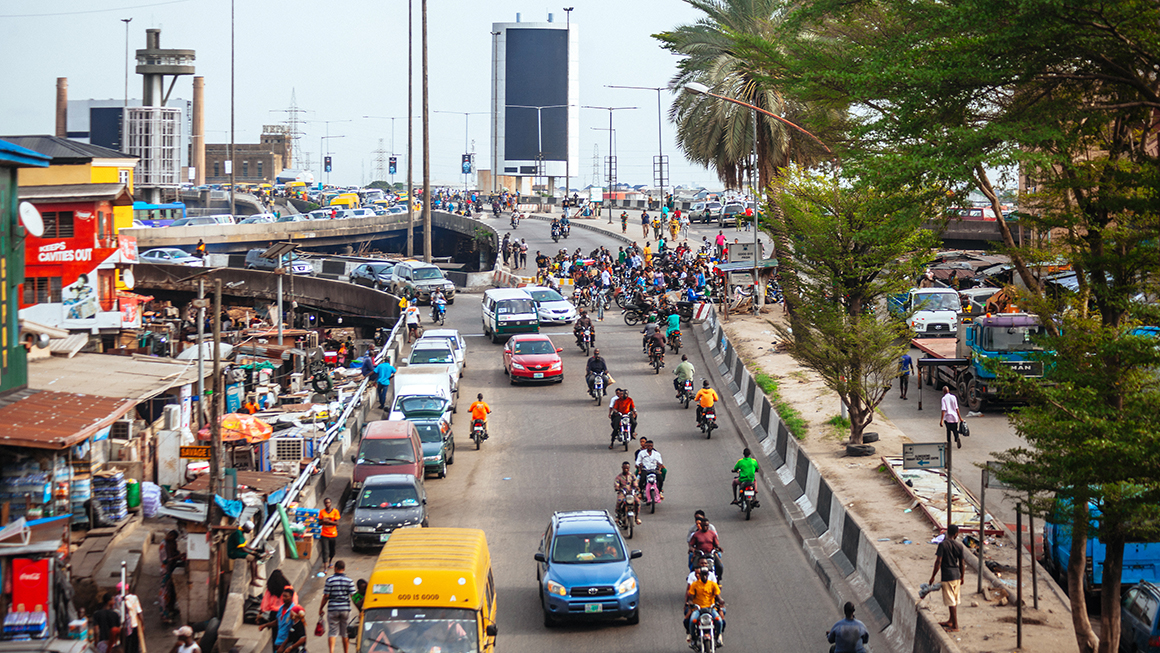
Rapid urbanization and climate change are increasing the vulnerability of African cities to the harmful health effects of extreme heat. Already, more than one-third of heat deaths in many countries worldwide are linked to climate change. Even when heat isn’t lethal, it worsens preexisting respiratory diseases and increases the spread of diseases like malaria.
Projections show that more people in African cities—20 to 50 times more, according to one study—will be exposed to extreme heat in the coming decades. This is particularly acute for residents of Africa’s urban slums (PDF) or informal settlements, who make up more than half of the region’s urban population. Poor planning, inadequate service delivery, and socioeconomic exclusion leave them without resources (PDF) needed to adapt to heat stress, such as quality housing, proper sanitation, and access to air conditioners. Moreover, the lack of systematic data collection and reporting on heat-related mortality means we don’t even have a full grasp of heat’s true toll on African cities and their residents.
To mitigate the impact of intensifying extreme heat, cities must act swiftly. Global evidence shows nature-based solutions, such as urban greening, expanded park space, and green roofs, can help reduce temperatures, among other benefits.
Here are three first steps leaders can take to apply such solutions in African cities.
- Engage slum residents in the process
Informal settlements provide much-needed housing amid the severe shortage in many African cities, but they shrink urban green spaces, typically experience higher temperatures than other areas within the city, and are highly vulnerable to the damaging health effects of heat.
Research shows many informal-settlement residents uniquely understand the economic, social, and health benefits of urban green space, including its role in temperature regulation. However, many aren’t empowered to take action to protect these natural assets, even if they may want to.
To incorporate residents’ insights into climate change solutions and make them more effective, African cities can engage residents in the management and cultivation of green spaces by:
- ensuring residents can participate in green infrastructure planning processes
- providing resources for residents to carry out locally led greening initiatives in communities
- training them in micro gardening techniques, because lack of space is a common challenge
- raising awareness of the benefits of green infrastructure and residents’ roles in managing it
These steps can help turn intent into action, but to make a difference in increasing green space available to combat heat, these steps must be combined with measures that address chronic housing deficiencies in informal settlements and meet residents’ basic needs (PDF).
- Invest in urban greening hyperlocally
Evidence shows (PDF) expanding green space, such as by planting street trees (PDF), can help reduce air and surface temperatures. But these efforts shouldn’t be limited to major roads or central business districts. Rather, they should be expanded to neighborhoods, like Freetown, Sierra Leone’s initiative to plant 1 million trees to reduce heat stress, improve air quality, and address other climate risks.
When done at the household and community scale, tree planting can also help keep cooling costs down. A study of the Nigerian city of Akure found tree shading can lead to reduced air conditioner use, resulting in up to $218 in savings on energy costs every year. These savings are far from trivial in a country where 40 percent of the population lives below the poverty level of $381 per year.
When policymakers pursue this strategy, they should engage local communities and secure resources for ongoing tree maintenance. Past programs on the continent and elsewhere didn’t take these steps, and as a result, many planted trees died before they could deliver expected climate adaptation benefits.
In addition to planting trees, cities can also engage building owners and communities to retrofit buildings to apply green practices, such as using green walls to moderate indoor temperatures. They could also apply these practices to vacant and underused spaces in communities and convert them into cooling centers to reduce heat stress.
- Shift development paradigms
The urban built environment often expands at the expense of cities’ green spaces, even though policymakers and residents are aware of their benefits. Many African cities are losing their green spaces (PDF) to urban sprawl and infrastructure development. Some, like Accra, Ghana, and Dakar, Senegal, have cleared green spaces to provide housing for the rapidly growing population.
If these trends persist, African cities won’t have much green space left to lean on for heat regulation benefits.
Reversing these trends warrants a paradigm shift in city making. Rather than accepting green spaces as necessary casualties of urban growth and development, city leaders should consider treating the city’s natural assets as integral to city development agendas (PDF) and urban residents’ health and well-being. For a start, city economic development plans should account for the economic and social benefits a city’s natural resources yield, as well as the costs of letting the built environment encroach on them. In managing urban growth (PDF), cities should also delineate significant amounts of open green space that will remain as the built environment expands and integrate the protection of natural assets into the mission of city agencies and departments.
Such plans need to be coupled with effective land-use regulation enforcement to help protect existing green spaces, along with dedicated programming and financing to expand urban greening.
Extreme heat is already hurting African cities, and without mitigation, its effects could further harm residents. Leaders can draw upon their cities’ natural assets to build resilience. But realizing this potential depends on city leaders making direct investments in green spaces, empowering communities in the process, and centering nature in long-term plans for cities’ development.
Let’s build a future where everyone, everywhere has the opportunity and power to thrive
Urban is more determined than ever to partner with changemakers to unlock opportunities that give people across the country a fair shot at reaching their fullest potential. Invest in Urban to power this type of work.